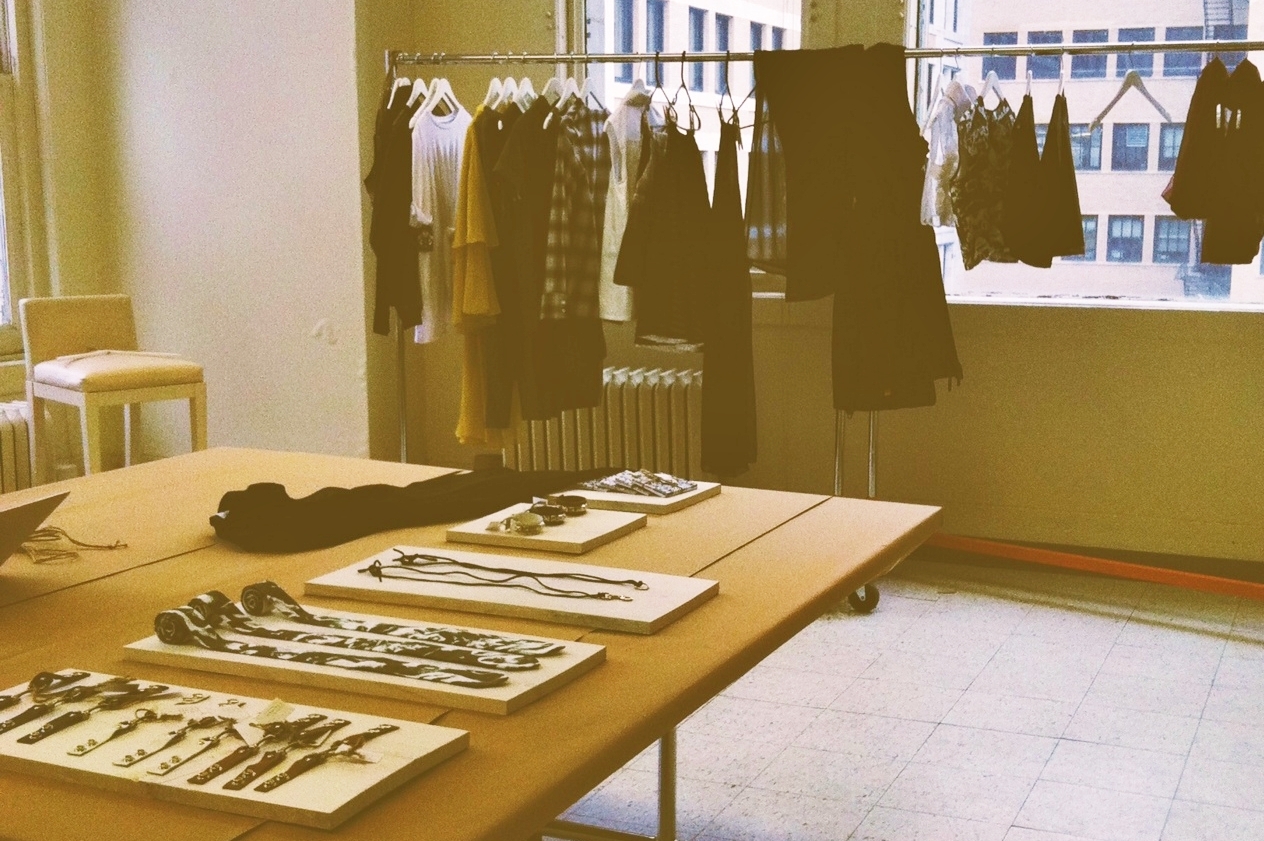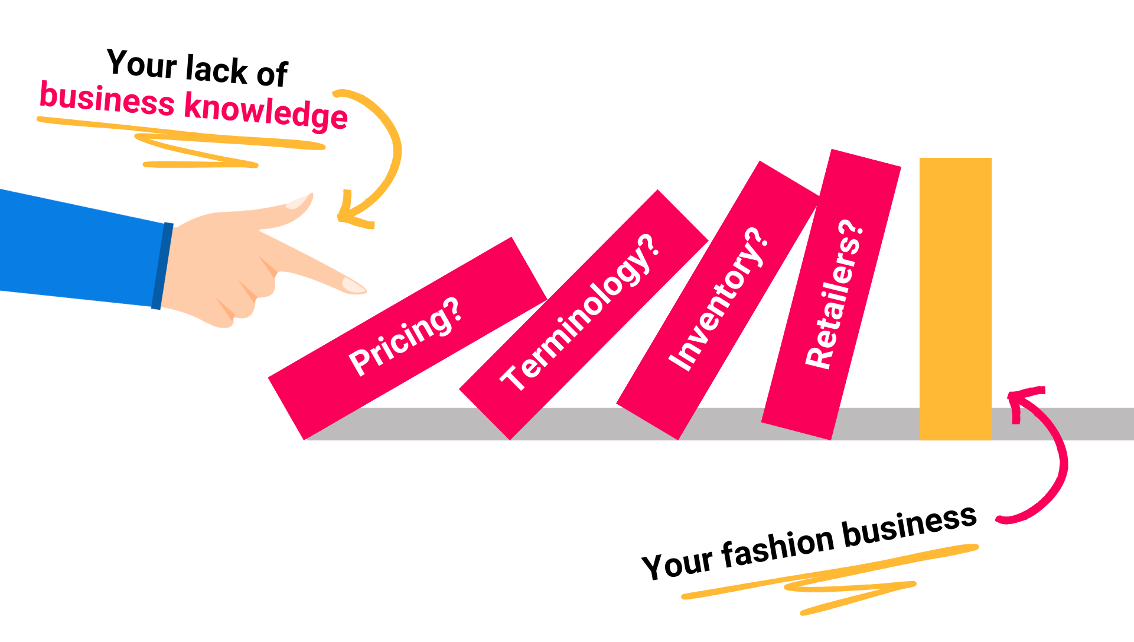What is a Trunk Show and How Do They Work?

A typical trunk show is when the creator/vendor brings their line to a boutique or museum shop for a special in-shop showing (the items used to be carried in a trunk, thus the name). Generally, but not always, accessories vendors bring stock pieces they can sell during the event while clothing vendors bring samples, take orders, and ship the items later (usually 4 – 8 weeks out).
A show can be from 2 hours long to all afternoon, depending on the boutique, the designer, their wants and needs, and their relationship. My suggestion for designers starting with a new store is 2 – 3 hours and then call it a day – if things are great you can always stay. If things aren’t so great, you can leave.
If you’re bringing samples, be sure the samples are the same fit and quality that you will later ship the customer. Make sure everyone’s very clear with what date you promise to deliver the merchandise – DO NOT promise something you cannot fulfill. You will lose your credibility and if you’re late, the customer will have the option of canceling the order completely – ouch!
How do the store’s customers pay?
If you are selling from stock, obviously customers pay at the show and take their merchandise right away. If you’re showing samples for future delivery, boutiques generally ask the customer to pay in full when the order is placed. Sometimes, boutiques ask the customer for half up front and half when the merchandise arrives. The customers pay the store directly and you get paid by the store.
Who sets the prices at the Trunk Show?
It is the shop owner’s decision what retail price the consumer is charged. The shop will typically (though this can vary greatly) pay you the wholesale price for each piece they sell.
When do I get paid?
I suggest you get the store’s credit card information before the trunk show begins. For accessories, when you pack up to leave, you should go over the totals with the owner or manager so you all agree on the amount owed to you. The shop can cut you a check right there or you can Immediately charge the boutique’s card. Do not wait. For clothing, talk to the shop about paying you half after the trunk show (this is different from a regular order where you will not get a deposit), and half upon delivery. This will help your cash flow. Ask them about this BEFORE the event so you avoid misunderstandings.
Should I bring stock or do pre-sale and ship the items after I produce them?
Depends on your brand. And yes, you can do both at the same time as long as it’s clear.
What’s my relationship with the store?
Consider yourself a true partner with the retailer. You and the store are in this together and it’s up to both of you to make it successful. Do everything you can to ensure the shop has a good experience with you and that you both make money so it’s a Win-Win situation.
What’s in it for me?
Designers win:
- Your line is featured in front of a whole new clientele – which you didn’t have to find on your own.
- You get a chance to interact with the end-user of your product; this gives you an opportunity to see your things on many different people and hear their feedback (so valuable). It makes you a better designer.
- It gives you a chance to actively SELL your line and explain why and how you designed it. This can be quite a rush for designers and you get to see what customers really like about your product – it feeds the ego. You can also see what’s not working.
- You get an opportunity to be associated with a store that can give your line credibility. When buyers and customers see you sell at such-and such, it makes you more interesting to them.
- You get a chance to develop a personal relationship – not only with the store – but with customers. People like to buy from people they know, and now they’ll know you.
What’s in it for the retail store?
Stores win:
- Trunk shows are a low risk way to test new products. Stores don’t pay you for merchandise until it is a guaranteed sale and they don’t tie up their dollars with inventory.
- It gives the shop an automatic, low-cost special event and creates a buzz with their customers. It’s an easy way to keep in touch with their clients and make their store seem special.
- Stores love that they can offer a much bigger selection and more options for their customers than on a regular day. Trunk shows freshen up their offerings and their shop.
- Even if a shop has spent their OTB (Open to Buy) dollars for your category, they can still do a trunk show because it doesn’t cost them anything up front.
- It’s a good way to get their employees excited. Having the designer in-store gives everyone a lift and adds some much-needed energy to the day-to-day retail grind.
What about a group Trunk Show?
If you brand is new or your line is small, you can suggest to the buyer that they include you in another show they may already have planned.
You could get 2 – 3 designers together and offer a package Trunk Show. I have seen this work but not as often as I would guess – or as well as I would hope. The buyers like to put together their own designer assortment.
Group shows work very well when you do your own pop-up shop.
What can I do BEFORE the trunk show starts?
Ask ahead if the shop will have displays you can use for your line or if you need to bring your own.
Find out where your items will be displayed in the shop and how much space you will have. Plan accordingly.
Ask the shop how they want the items ticketed and discuss what markup they want. Again, it is their decision what retail price they charge. Once everyone agrees, be sure you mark the retail prices on your merchandise BEFORE the event begins. Scrambling around to price things at the start of a trunk show is not cool – it will annoy the shop and make you look bad. It’s not enough to just have a price list at the trunk show; each item should be ticketed individually.
You want the owner, manager, and team to wear your designs on trunk show day whenever possible so plan ahead. Talk to them beforehand about what they’d like to wear so you can get duplicates if necessary. It gets everyone excited about your line and makes a huge difference in how much you sell.
How much merchandise should I bring to the Trunk Show?
Well, enough to make a nice display but not an overwhelming amount. Base it on the size of the shop, the space allotted to you, what you are able to do, etc. Ask the owner the # of pieces she wants you to show to get an idea of her expectations. If she says 100, you can say no, but at least you get a clue about what she’s looking for.
Promote the heck out of it
Act like a true partner and be pro-active about maximizing you sales during the trunk show – and not relying on the store to do it. The old days of showing up with your line on the appointed day and waiting for customers to walk in the door are OVER. You must do more, including:
- Create signage for the shop window advertising the event, pay for it yourself, and be in charge of installation etc. Show the shop a sample of what you want to do and agree to alter the signage to their particular taste and storefront if necessary.
- Create a nice postcard or marketing piece to be handed out before the event to the store’s customers.
- Create an email invitation to the store’s current contacts as well as your email list. In addition to this, send two reminders before the event.
- Offer an incentive just for the show. It doesn’t have to be a discount on your line. It could be a gift with purchase, free shipping, a chance to win a seriously good prize (no, a $50 gift card for your line is not that exciting – a $500 shopping spree gets their attention)
- DO YOUR HOMEWORK – take an afternoon (or two) before the show and stop by the other businesses around the area. Say hi, be friendly, hand out your cards/photos/whatever you have, and ask them nicely to send their customers over. Consider giving them a good reason to send people your way – a $10 gift card to Starbucks for every customer they send? A percentage off for their customers or themselves? I know seems like a lot of work, and it IS, but it pays off.
- Talk to the store and tell them you will want a list of customers who make a purchase from you during the show and their contact information. Ask them about this before the event so they can get a system going to keep track of things for you.
Who provides the snacks and drinks for the show?
Be sure to discuss this before the event and get very clear on everyone’s responsibilities. Generally, the store provides the treats but every situation can be different.
NOTE – people don’t really eat much during a trunk show. They may grab a drink but they rarely consume any actual food so there’s no need to go crazy. I’ve made this mistake a bunch of times and end up eating cookies for 6 days straight.
What can I do DURING the trunk show?
Show up early and get set up. Please, please, don’t arrive at 10:55 for a show that starts at 11 am.
Look the part at the trunk show. If you bring an employee, they should look the part too. Wear your designs whenever possible – it works like crazy to sell more stuff! Merchandise what you’re wearing the way you think it looks best. People don’t always “get it” until they see it.
Keep your own order/receipt book for yourself even if the shop is giving a receipt to the customer. Yes, you asked the shop for contact information of customers who make a purchase. But cover all your bases and keep your own information too. You want a record of what sold that you trust. For orders that will be shipped later, you can make your own notes about any special instructions, etc. Trust me, the shop owner may take on order for a “black bracelet, small” and you’ll have no idea what they are really ordering, nor will they.
Display things properly. Merchandise your line at the store TO SELL. A beautiful arrangement is nice, but will it actually sell the stuff? Did you ever see those cheap mall stores pinning the earrings that go with the outfit on the mannequin in the window? They do it for a reason, because IT WORKS, regardless of how cheesy it is. Most consumers absolutely don’t “get it” unless it’s crystal clear. You‘ve been looking at your line for months, so try to see things from another perspective and make your line easy to understand and to buy (without pinning the earrings, please).
Have some nice tabletop signage for your display – your company name, website etc. Be sure everything goes with your branding and your look.
You may want to bring a simple bouquet of flowers for your table.
Bring a few of your own displays just in case – simple but effective – for your table in case the shop doesn’t have anything for you – even if they said they would. You may want a tablecloth for the display table.
Sometimes shops offer to keep the goods for a few more days without the designer present to see if they can sell more. This is a great idea if you feel OK about it. You just come back in a few days to retrieve your line and get paid then. Definitely do it if you trust them and feel comfortable.
What should I do AFTER the trunk show?
Follow through and deliver what you promised.
This is not always the fun part. It’s a blast to take orders, not as much fun to produce and ship them. This is the stuff that will make or break your business, however. If you’re reliable and
efficient, your business will prosper. I have seen dozens of designers lose momentum because they ship late or not at all, forget to contact who they said they would, and just show a general lack of discipline and dedication. Try to keep this in mind DURING the trunk show and don’t over-commit yourself or promise things you can’t do.
Remember above where I said “People like to buy from people they know, and now they’ll know you”? Make sure they KEEP knowing you by staying in touch. Use that list you requested from the shop and send a thank you note to each customer right away. If you sold them stock, send a thank you for the purchase; if they placed an order, thank them for the order, re-state the delivery date and just generally make them feel good about what they bought. I know this is a lot of work – I hear ya. But it costs less to KEEP a customer than to GET a new one. Odds are that if they buy from you once, they’ll buy from you again – if you make it easy for them.
You want to UNDER sell and OVER deliver.
For instance, you sell one dress. You DELIVER:
- the dress, of course
- wrapped in beautiful packaging
- a personal thank you note in the box
- any special information about the fabric or care of the item
- tips about what to wear with the dress
- an incentive for their next purchase
What else can I do?
If you’re bringing stock pieces to sell, it’s still OK (and recommended) to bring some higher priced specialty items for special order. Let’s say you sell handbags. Your average price for a handbag is $300 and you bring a bunch of stock to sell. A good idea is to bring samples of 2 or 3 wildly exquisite and expensive bags for special order only.
There are just some people out there who want to buy the most expensive thing – and a trunk show is the perfect opportunity for this. Internet marketing guru, Frank Kern, calls it the ladder theory. If you place a ladder in front of somebody they’re just going to naturally want to climb it, right? He says that if people know there’s another level they could be at right now they are hard wired; we all are, to want to get to that next level. A $300 bag? Great, but I sure would like that $900 red croc suede-lined diamonds on the soles of my shoes model. So give them some different levels of shopping.
What am I really selling?
You’re selling more than just a physical item, you’re selling a story. People want to buy a little of YOU in addition to your line. Have a brief handout about your background, how and where your products are made, what compels you to design. I’m not talking about “Jane was born in Chicago and graduated at the top of her class from esteemed University” blah blah blah.
I’m thinking more like “Here’s a picture of me in 7th grade with the patchwork jumpsuit I sewed myself in my basement. Then I became a doctor, cured cancer, traveled the world, and when I was 35, I went back to my true calling – making patchwork jumpsuits for Barbie dolls, which I’ve been doing for 8 years. All my materials are eco-eco, green-green, cute-cute, help you lose weight and otherwise improve your life. I am committed to fair pay – here’s a picture of my sewers who currently make more than I do. Here I am on a camel in Egypt being inspired for Fall 2017”. You get the idea – the STORY.
What if there is a certain shop I want to sell but they just aren’t interested?
First of all, be sure you aren’t barking up the wrong tree. Take a realistic look at whether or not the store is the right fit for your line and don’t try to jam anything down anyone’s throat. If you HONESTLY feel that your line would sell at a certain store if they would give it a chance, think
about why they say no. If you get the feeling it’s because they’re disorganized or too busy to plan anything, and then just keep trying. Make it clear that you’ll do most of the heavy lifting and show them how you have a whole trunk show “package” for them to simply accept.
Remind them that you will do almost everything, and that the boutique is responsible for:
- Sending out invitations (at vendor’s expense for stamps) or agreeing to give you their mailing list for this one-time use.
- Sending email invitations (that you have provided) to their current customers.
- Sending a follow-up reminder email – or two.
- Agreeing to promote the event with window signage (that you provided and installed) and give printed info to customers (again, you provided), stuff shopping bags with postcards (guess who) etc.
And now
So now you’ve learned the best, most effective, hard core way to do a trunk show. If you’re feeling overwhelmed, that’s OK, just take it a step at a time. Pick what you feel is most important for you to get started, and begin working toward your goal.
These are guidelines, not rules. It’s always best to keep in mind…“What can I use from this information for my brand? How can I relate it and tweak so it feels right for me?”
How do I get a boutique to book a Trunk Show with me?
You’ve learned how to have a successful show but if you don’t know how to get a show booked, this info won’t do much good.
No worries, I have a class for that.
“How to Book a Trunk Show with a Boutique”
This online Workshop teaches a strategy that was originally created for a private womenswear client who was who was having trouble booking Trunk Shows. She tried for three MONTHS to book a show (a high-end product) and was totally frustrated and exhausted. Then she used this system and booked 2 shows in 2 days. Bam.
More clients have tried this step-by-step “Trunk Show Packet” system and it’s working for them too. The Trunk Show workshop is online, available immediately, and you can grab it here:
https://fashionbrainacademy.com/training-courses/book-trunk-show-boutique/
Now tell me this. What do you think of this article? I’d LOVE to hear your feedback in the comments. Good or bad, I don’t care! I just like hearing from you.
Thanks for reading,
Jane





7 Responses
I LOVE THIS ENTIRE ARTICLE!!!
It was so helpful! I had no idea at all how this process worked and I was scared to even think about ever possibly doing a trunk show. I really never planned on doing one because I was just scared. Now I REALLY think I can do it.
Thank you so much!!
Irela, I am SO HAPPY for you. My goal is to give designers the courage to DO IT and you just n=made my day. Please let me know what happens.
– Jane
Absolutely perfect-no-details-left-behind advice. Thank you mucho, Jane!
Thanks, Indre! That means a lot to me. – JH
Really great article! Very helpful from both the designer perspective and the store’s.
If I am doing at home trunk shows, do I sell the clothes at wholesale or retail?
Thanks,
Kristin
Hi Kristin! If you’re doing a home show, you are selling at full retail.
– Jane